The Extension Buildings of the ADGB Trade Union School in Bernau
Documents of the Formalism Debate in the GDR
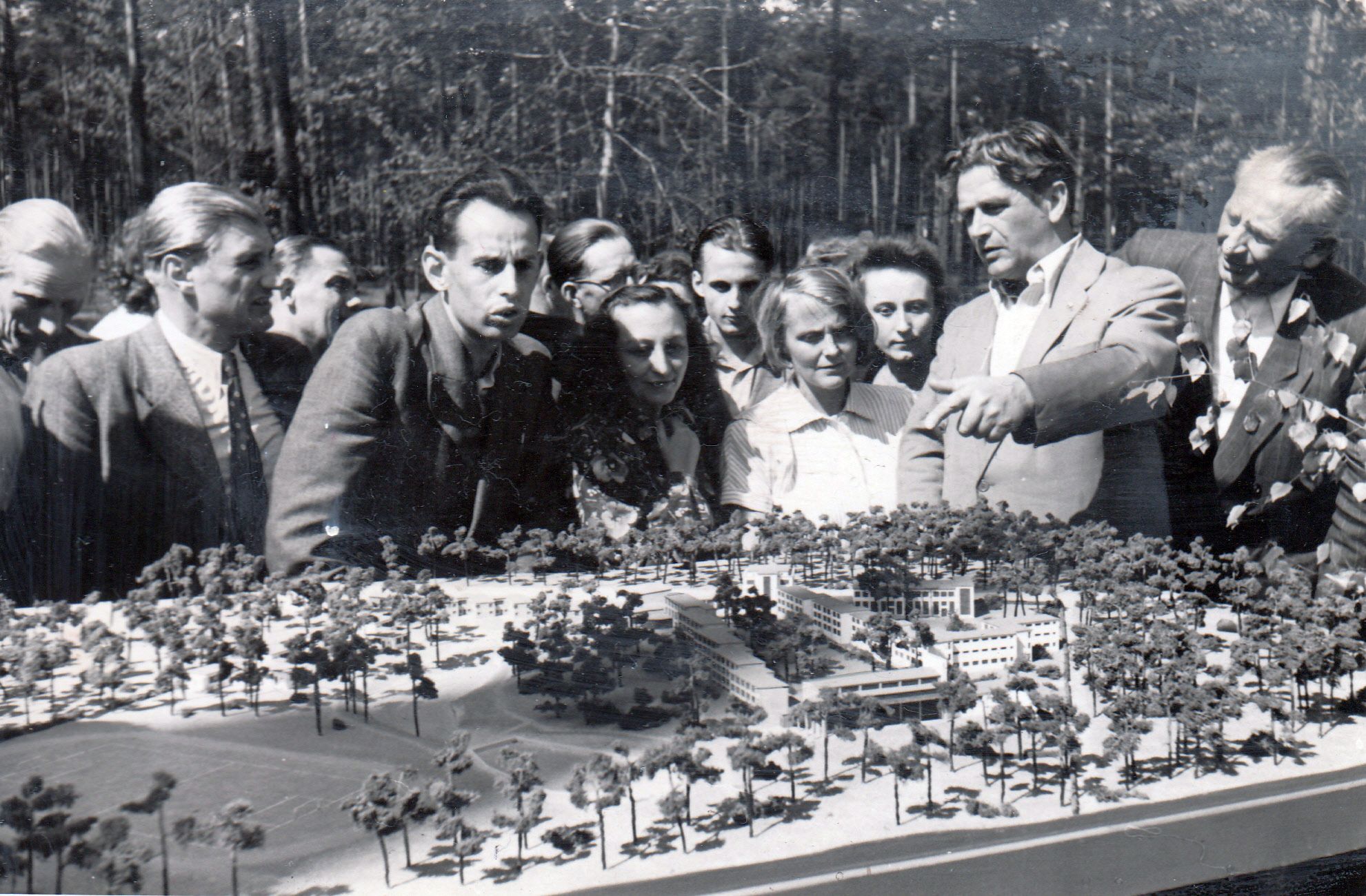
Fig. 1: Georg Waterstradt (architect) / Fa. Mozart Berlin, Pankow (model) / Kurt Klingner (photo):
Hans Jendretzky, Chairman of the Federal Executive Committee of the FDGB, explains the model for
the extension, also present is Georg Waterstradt (left), 1950,
Archiv baudenkmal bundesschule bernau e.V.
Together with its with its teacher residences, the former ADGB Trade Union School (Bundesschule des Allgemeinen Deutschen Gewerkschaftsbundes, ADGB), is still regarded today as an icon of modern architecture. Designed at the Bauhaus under the direction of the Swiss architects Hannes Meyer (then director of the Bauhaus) and Hans Wittwer (head of the Bauhaus building workshop), together with the students of architecture, the building ensemble still stands today as a paragon of collective work, reform pedagogical ideas and analytic architecture. After extensive and careful renovation by the Berlin office of BRENNE ARCHITEKTEN, many parts of the Trade Union School and teacher residences have now been restored to their original state. In 2017 they became part of the UNESCO World Heritage Site today known as “The Bauhaus and its Sites in Weimar, Dessau and Bernau.” (Fig. 2)
Less attention has so far been paid to the extensions to the Bundesschule, planned between 1949 and 1951 by the architect Georg Waterstradt, who himself was deeply impressed by Meyer and Wittwer’s historic building. As an ensemble, these buildings stand as a valuable testimony to the vigor of GDR architecture, which, under the political influence of the Soviet Union, changed constantly in its early years. In particular, the first phase of the expansion (1950 to 1952), shows Waterstradt’s orientation towards modern architecture, which is present in the immediate environs, as is the renunciation of modernism that followed. The “formalism debate” conducted in the GDR led to a rejection of all the architecture that had emerged from the Bauhaus, and thus, that set of political-architectural principles exemplified by the Trade Union School.
Waterstradts Extension Planning 1950–51
After the National Socialists occupied the Trade Union School in 1933, it was used as a leadership training center for the SS, SD and Gestapo up until the end of the regime. Suffering extensive damage during the war and subsequent Soviet occupation (it was used for a time as a temporary hospital by the Red Army), in 1947 the school reopened under the leadership of the newly-founded Free German Trade Union Federation (FDGB) as the FDGB Trade Union School “Theodor Leipart.” Two years later the school was regarded as inadequate to the FDGB’s ambition to develop the campus into a “workers’ academy”1 (and an anticipated Trade Union College), as a period of sustained growth was anticipated. Establishing a new FDGB Trade Union School for 500 students on Pariser Platz in East Berlin’s cultural center was considered. This aspiration should have “... represent(ed) the trade union movement for the next 10–20 years,”2 but after elaborating the advantages and disadvantages, the plan was judged as “inappropriate”3 by the Socialist Unity Party of Germany (Sozialistische Einheitspartei Deutschlands, SED), as it was feared “... the students would be distracted from life in the big city …”4 Therefore, the authorities elected to instead expand the Bernau Trade Union School.5
The planning for this was entrusted to Georg Waterstradt. Just prior to this assignment (beginning March 1949), the Berlin architect had been entrusted with managing the FDGB Federal Executive Committee’s construction department within its office of asset management. (Fig. 1) In his first planning proposal draft, he structured his proposal around Meyer and Wittwer’s existing architecture, declaring this in a written report to the GDR government office submitted in April 1950.6 His plans were to leave the historic Bundesschule largely intact; only the three chimneys at the main entrance were to be removed and replaced by a boiler house attached to the gymnasium.
The first of the new extension buildings a visitor would encounter was a tower-like three-story administration building, connected by a passageway to the entrance area. (Figs. 3 and 4) In his Waterstradt’s original plan, he connected his addition to the existing building by means of a slightly rounded one-story corridor, placing the new main entrance in its middle, marked by a slight protrusion and an open staircase with two flanking lanterns. (Fig. 5) To the northeast of the administration building, staggered down the sloping terrain, Waterstradt proposed four three-story boarding school units, envisioning these as a mirror image of the existing boarding school wings of the Meyer-Wittwer building. Set at a right angle, two further boarding school buildings were planned, offset against each other. These formed a similar conclusion to the gymnasium and seminar building of the historical Trade Union School, with a new boiler house attached to the gymnasium. (Fig. 6) To the northwest of the extension, an elongated two-story teaching building was planned. (Fig. 7) The main auditorium was to be built on the ground floor, with 15 smaller seminar rooms above it.
Waterstradt’s plan connected all the extension buildings to one another through corridors, with a partially glazed side looking out on the garden—a stylistic reference to the glass corridors of the Meyer-Wittwer building, which had connected the complex’s various buildings (business, boarding school, school wing) to one another. Analogous to the changes in the historical completely glazed corridor, which, due to a lack of materials, was boarded halfway up with wood (probably during the Second World War or shortly afterwards7), a corresponding corridor would connect the new boarding school wings to each other. (Fig. 8) A similar corridor was envisioned to connect the administration building with the boarding school units, as well as between the new and old teaching building. Here Waterstradt had originally planned a representative hall—the notional center of the extension building. None of these planned connecting corridors was ever built, although they still appear in site plan renderings until mid-1952.
In order to clearly distinguish the extension buildings from the yellow brick of the Meyer-Wittwer building, the architect decided in favor of iridescent red clinker bricks. Like the yellow brick developed in the 1920s for the ADGB by Max Taut (who was particularly known for his office building for trade unions), a stylistic trademark deployed throughout the original ADGB complex, the red brick was intended to symbolize the FDGB. Waterstradt succeeded in dividing the walls primarily through the arrangement, size and division of window areas. With additional dividing elements such as pilaster strips tapering upwards, he gave the extension buildings a face of their own, so that the design of the new building ensemble referred to the historical complex (each complex included its own inner courtyard), uniting the two into a greater whole, unified by the modernist radiating structure of the historical building ensemble incorporated within the new additions.
The Meyer-Wittwer building, with its teacher residences, had already been included in the GDR district monument list of sites of supra-regional importance in 1977; the Waterstradt extension buildings only received this recognition after the fall of the Berlin Wall in 1992. Not included were the teacher residences—also planned by Waterstradt—located near the historic teacher residences nearby the Bauhaus, notable for how they reflect the architect’s understanding of his profession.8
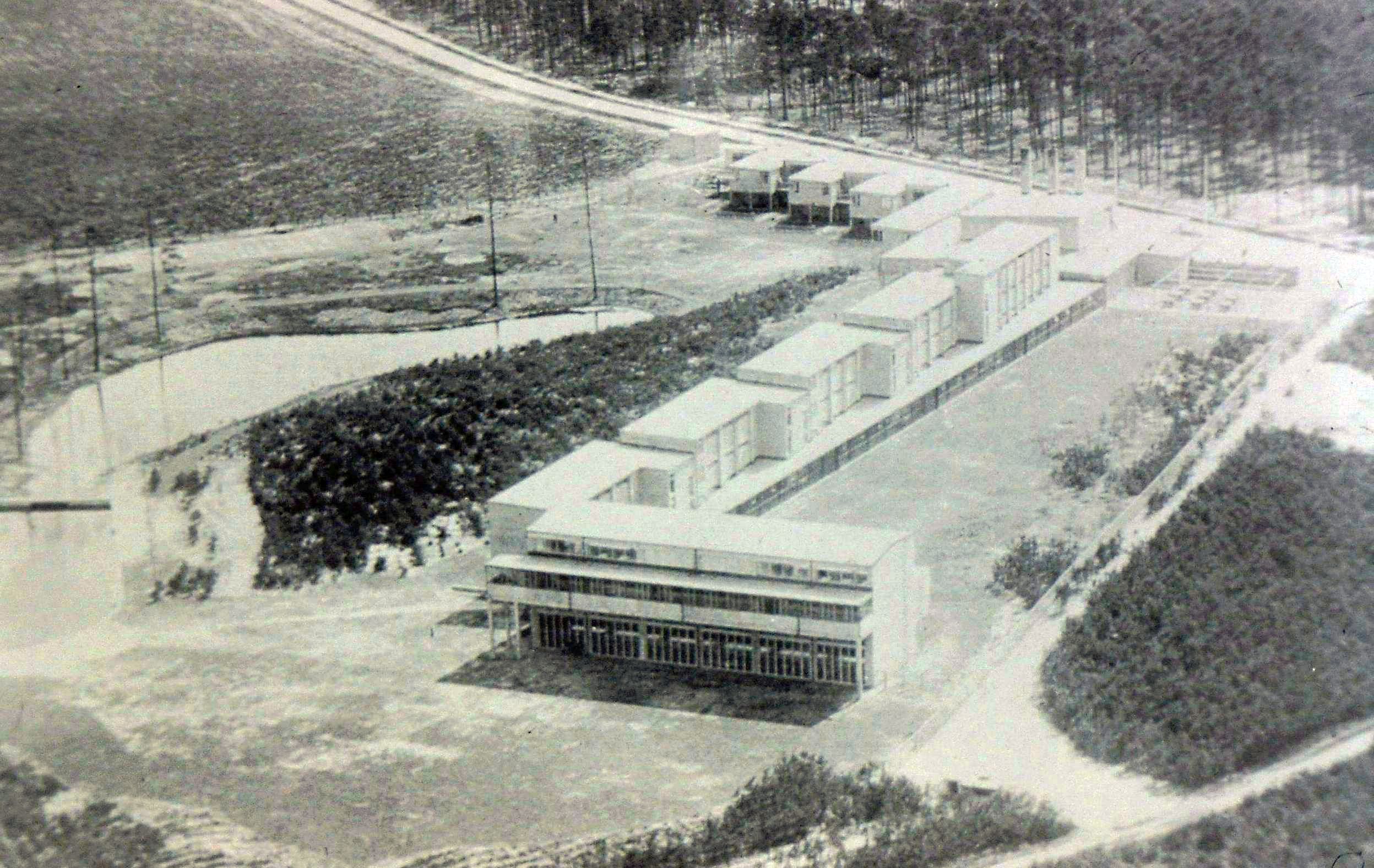
Fig. 2: Hannes Meyer and Hans Wittwer (architects) / Unknown photographer: Trade Union School of the ADGB in Bernau-Waldfrieden, general view (aerial view) ca. 1930, Archiv baudenkmal bundesschule bernau e.V.
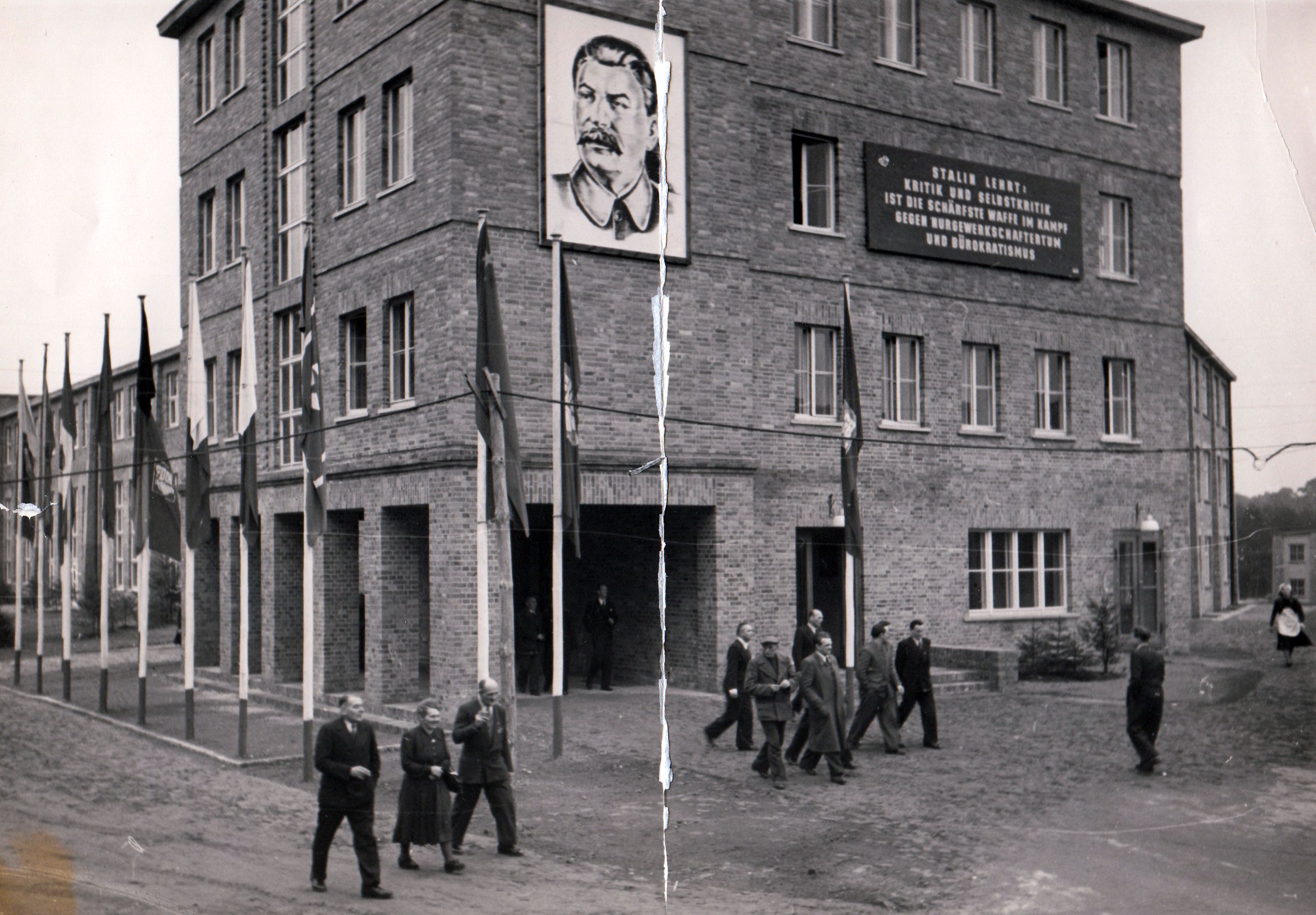
Fig. 3: Georg Waterstradt (architect) / Kurt Klingner (photo): Head office building (without connecting corridor to the old building), ca. 1950, Archiv baudenkmal bundesschule bernau e.V.
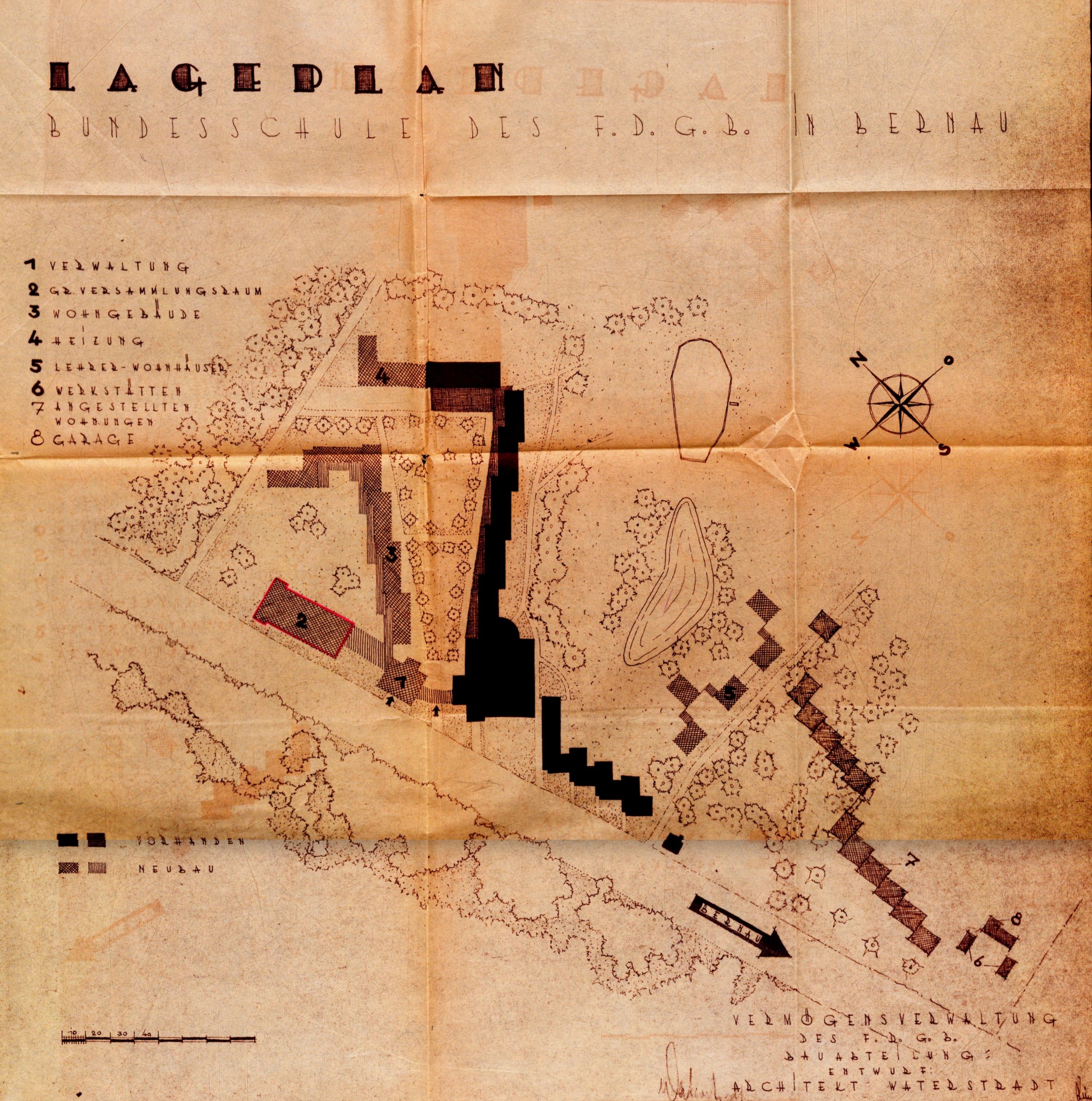
Fig. 4: Georg Waterstradt (architect): Site plan of the expansion of the ADGB Trade Union School planned between 1950 and 1952, 1950–51, Kreisarchiv Barnim.
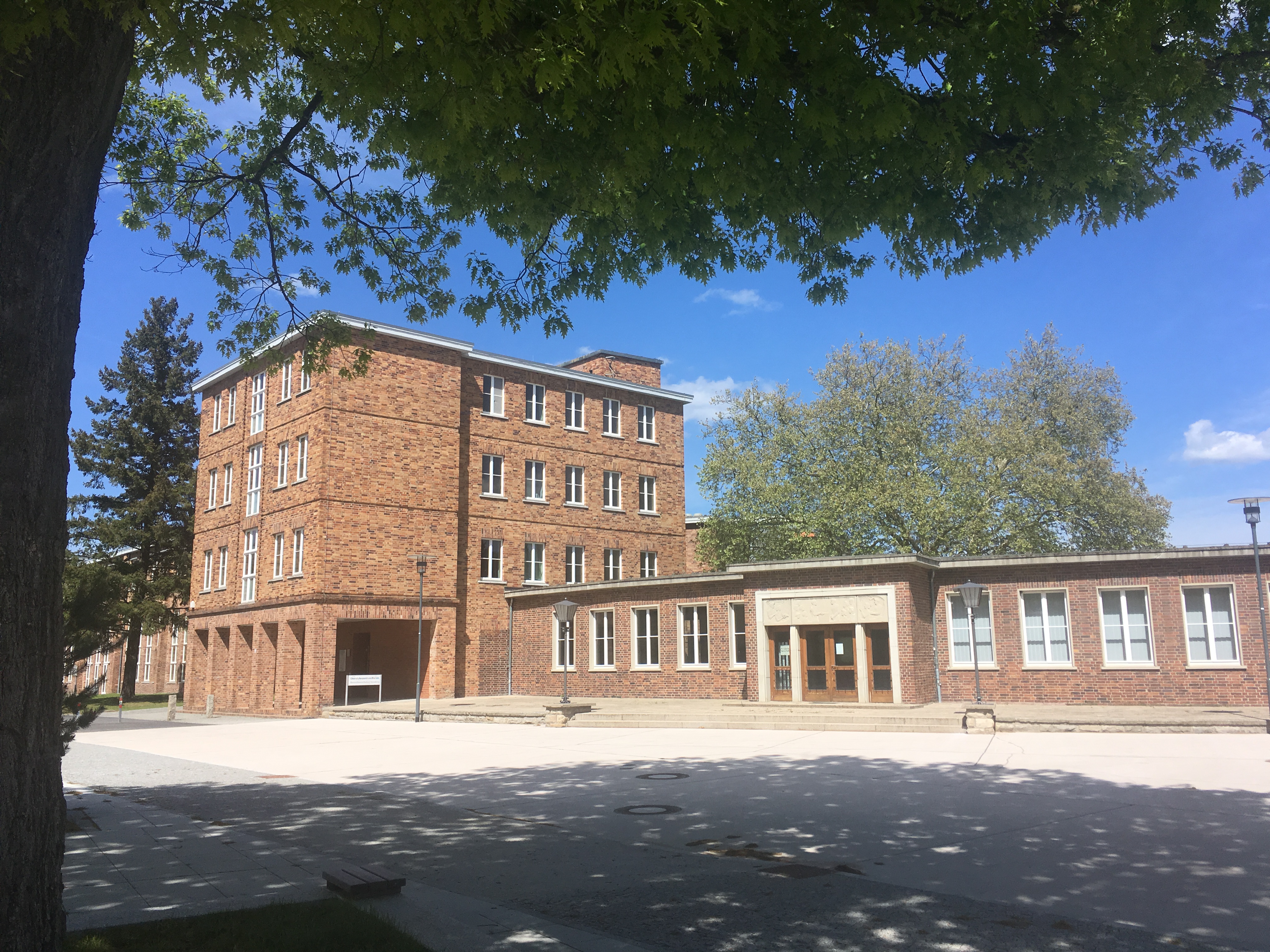
Fig. 5: Georg Waterstradt (architect) / Anja Guttenberger (photo): Administration building with connecting corridor and protruding entrance, 1950 / 2019.
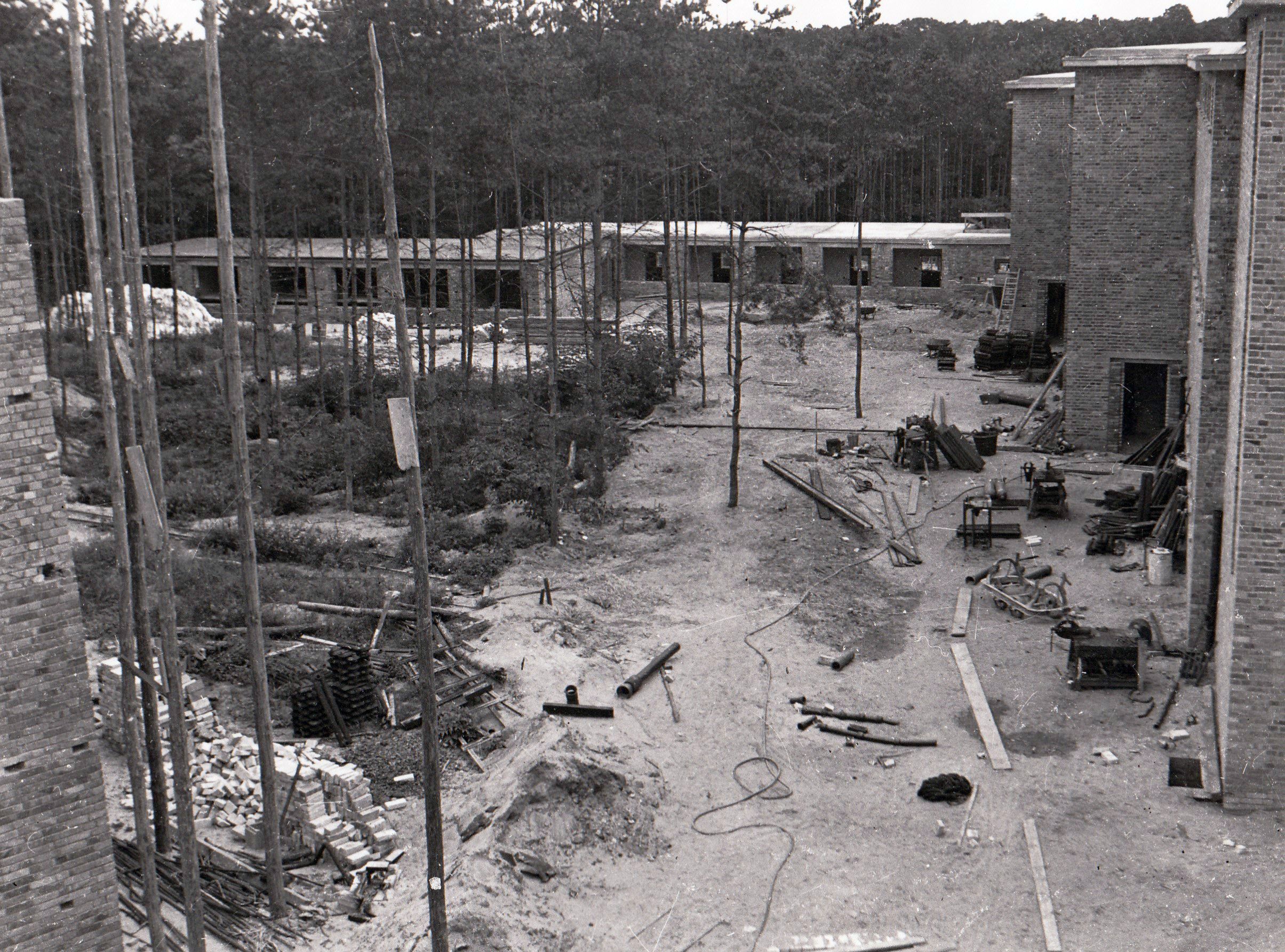
Fig. 6: Georg Waterstradt (architect) / Unknown photographer: Boarding school building of the extension buildings in the shell construction, 1950, Archiv baudenkmal bundesschule bernau e.V.
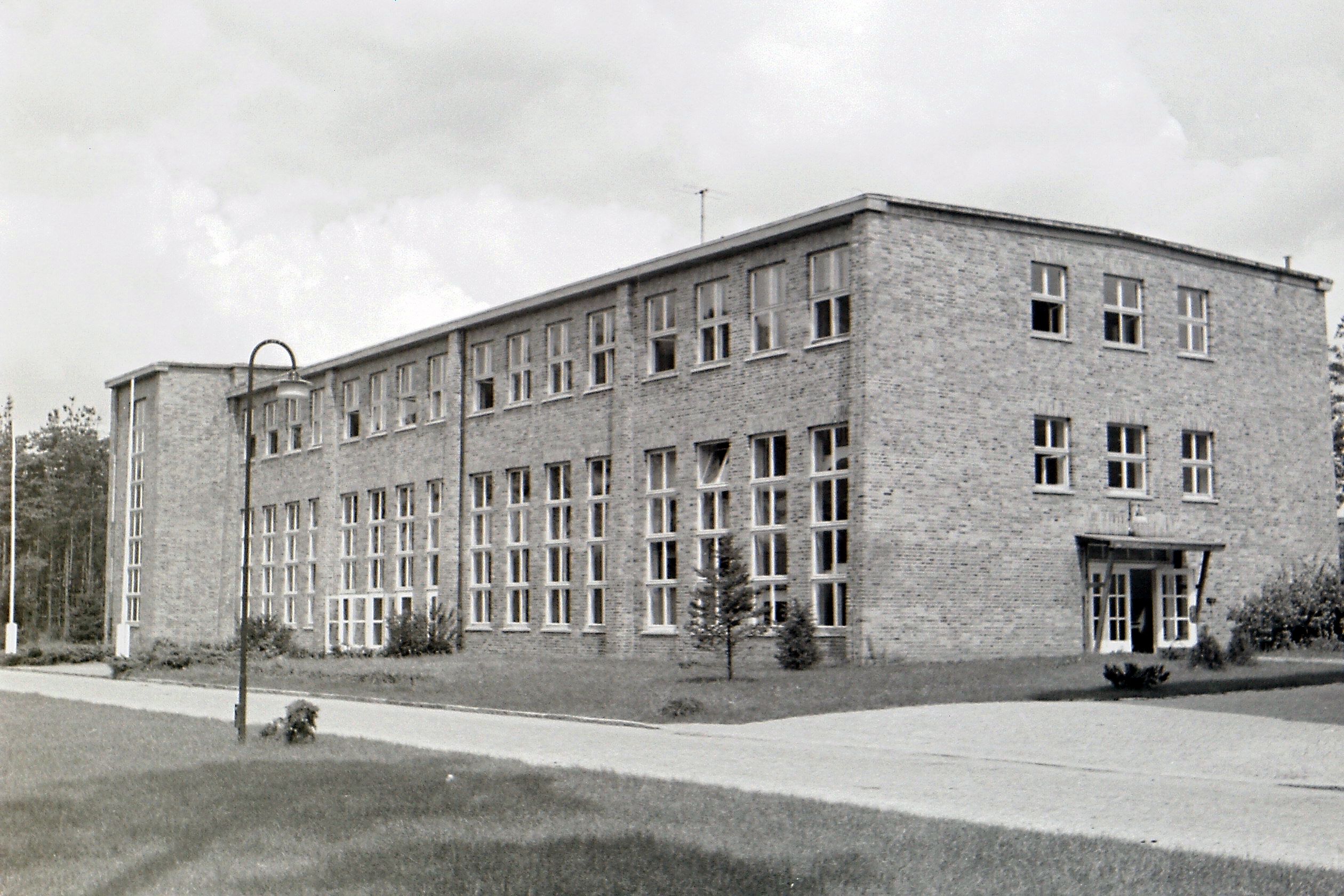
Fig. 7: Georg Waterstradt (architect) / Unknown photographer: Educational building, facade view, 1953–61, Archiv baudenkmal bundesschule bernau e.V.
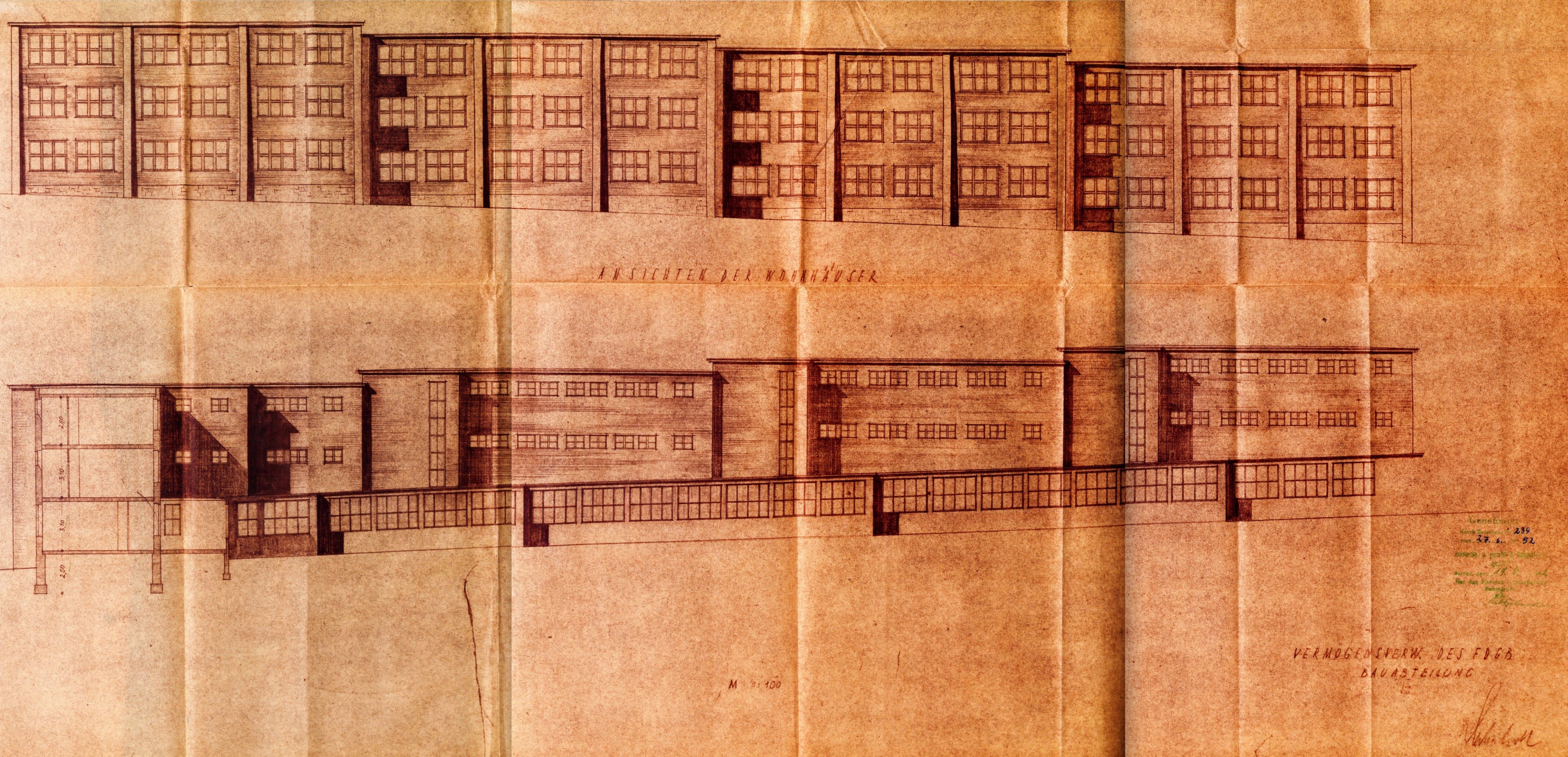
Fig. 8: Georg Waterstradt (architect) / Unknown photographer: Views of the boarding houses of the extension buildings, 1950–51, Kreisarchiv Barnim.
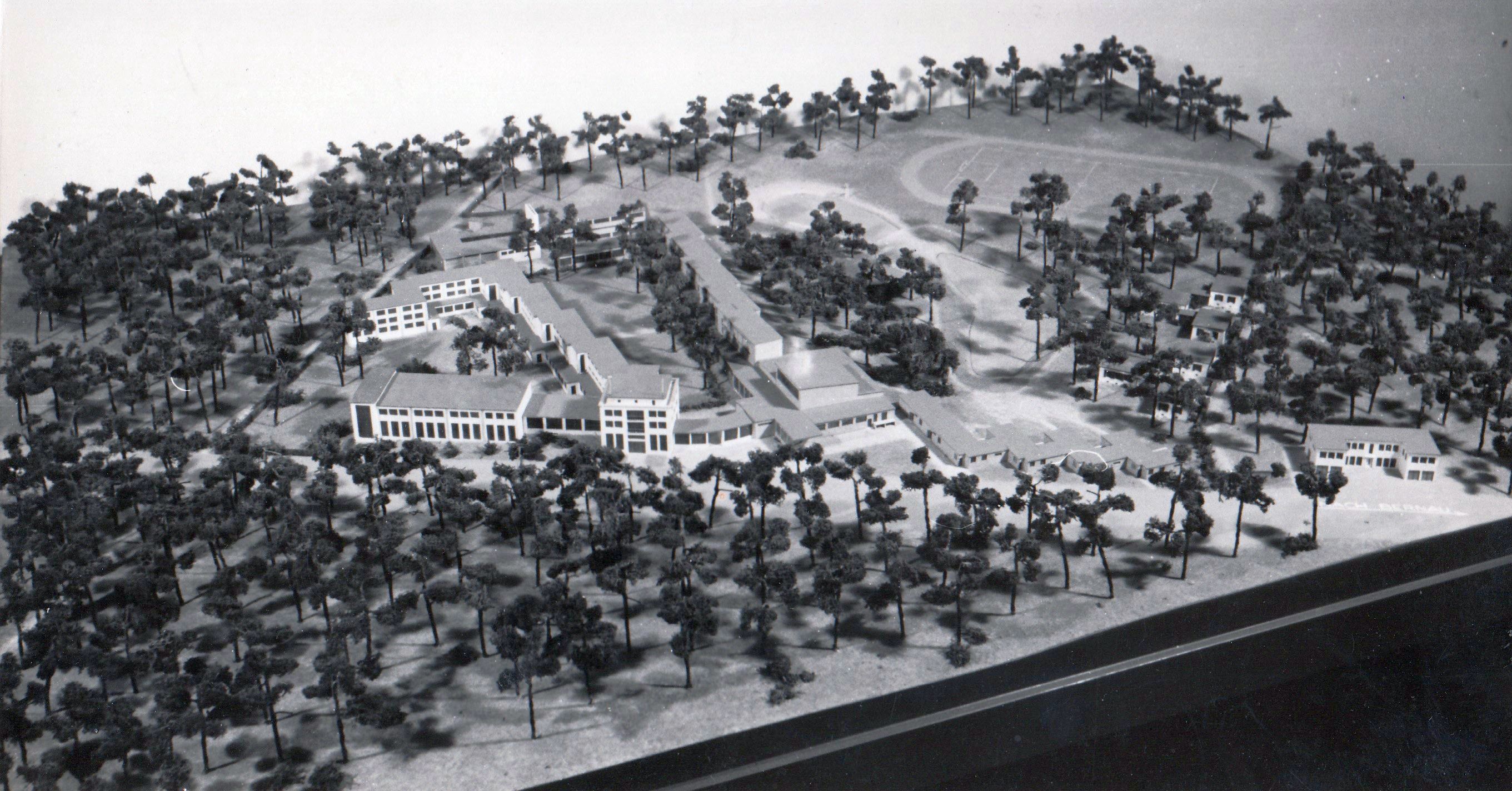
Fig. 9: Georg Waterstradt (architect) / Fa. Mozart Berlin, Pankow (model) / Kurt Klingner (photo): Model of extension buildings of the Trade Union School Bernau, 1950, Archiv baudenkmal bundesschule bernau e.V.
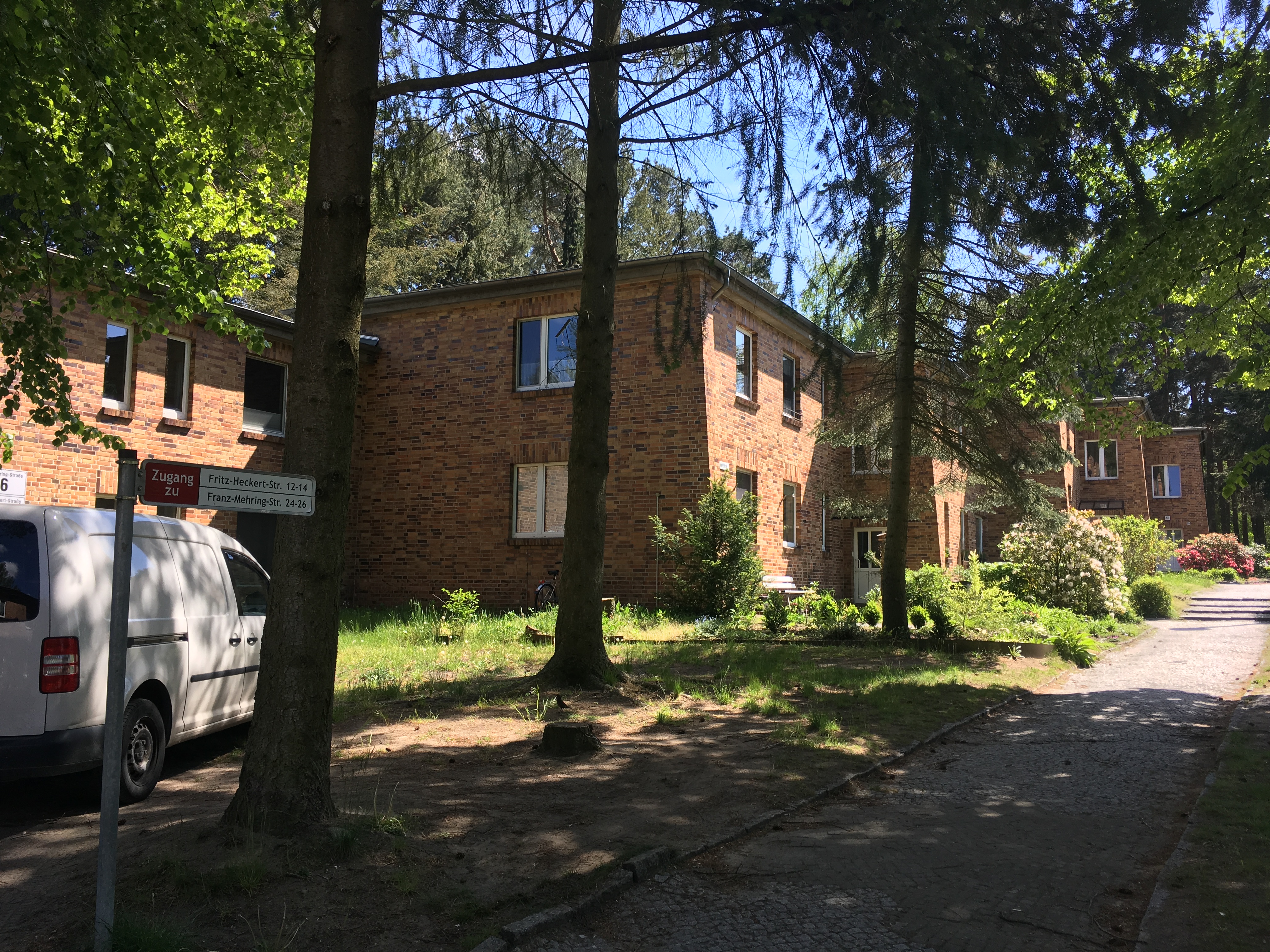
Fig. 10: FDGB-Baukollektiv (Mundt und Hehlert, design) / Anja Guttenberger (photo): Teachers’ and employees’ apartment buildings of the extension buildings in Franz-Mehring-Straße and Fritz-Heckert-Straße, 1952–53 / 2019.
Waterstradt planned six single-story, offset residential buildings of clinker bricks in different shades of red, oriented towards an adjacent natural lake. Stairwells were to be located in protrusions between each individual residential building, with three houses together forming an inner courtyard. On the access road, a three-winged, two-story employee residence, complete with workshop building, was planned. Already during the planning phase, the perspective of the Trade Union School changed to such an extent that these six teacher residences would never have sufficed. The solution was to use the two-story structure of each house and partition each residence into two apartments. The teacher residences were still built according to Waterstradt’s plans, but one of the teacher residences was built some distance from the others, so the second courtyard of the three planned houses was not fully realized. (Fig. 9) According to the current inhabitant of the house, this is probably due to the fact that Karl Fugger, the first inhabitant of the house and director of the Trade Union College from 1952 to 1954, probably wanted to distinguish himself from the other teachers, reinforced by his planting a thick hedge around the house.
The proposed workshop building with employee apartments was never built: instead, the total number of teacher apartments envisioned by Waterstradt was increased once again. Otherwise, the building team following Waterstradt’s tenure oriented themselves to the designs conceived in the first planning phase. Following the model of the boarding school wings, two staggered rows of five-to-six two-story cubes (Figs. 10–11) were built using the same bright red alternating clinker brick as the administration facility, boarding school and teaching buildings. In their dividing wall and the upwardly tapered pilaster strips, the first teacher residences are stylistically related to the Waterstradt extension buildings. When the 22 apartments he designed no longer sufficed, the first multi-family houses were built in a saddle roofed timber-frame construction (1952), followed by buildings dating from the mid-1950s, built in series following the same design (Typenbauten), followed by prefabricated buildings (Plattenbauten)9 dating from the 1970s. These were used to house the steadily growing number of students and teachers, with construction expanded along the access roads to the Trade Union College grounds.10 (Figs. 12–13)
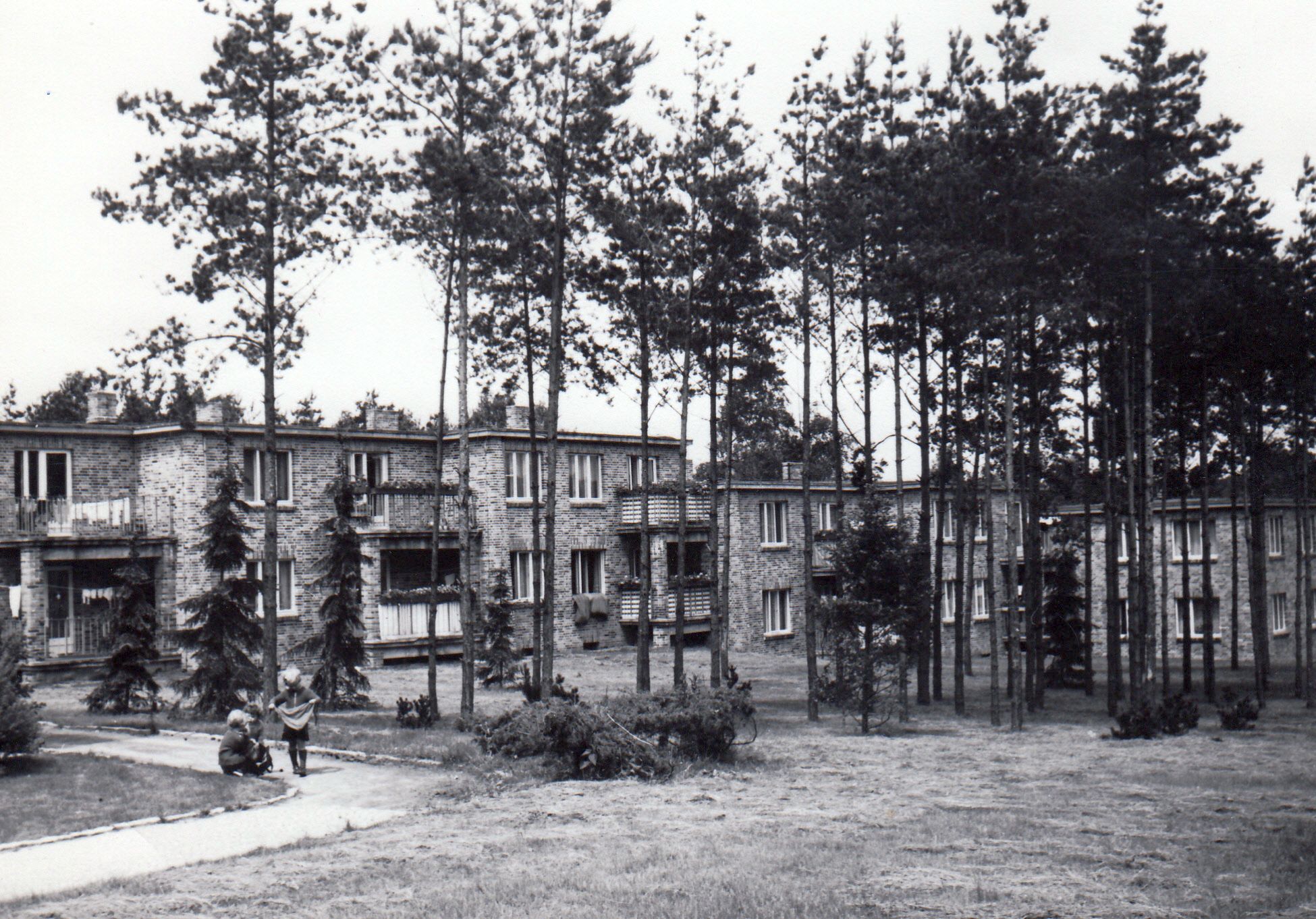
Fig. 11: FDGB-Baukollektiv (Mundt und Hehlert, design) / Unknown photographer: Teachers’ and employees’ apartment buildings of the extension buildings in Franz-Mehring-Straße and Fritz-Heckert-Straße, 1952–53 / 1962–89.
Formalism Debate
Around the same time that Waterstradt’s design for the extensions to the FDGB Trade Union School (and later College) was accepted on the basis of a model presented to Hans Hopp, head of the newly founded GDR Ministry for Construction, a delegation of architects from the GDR traveled to the Soviet Union. After their return, the view of architecture in the still young GDR was to change fundamentally, adapting to the Soviet taste for socialist classicism. At the third SED party congress of July 1950, where the top leadership committed itself to a party based on the Marxist-Leninist model, one of the agenda items was an architectural concept adapted from the Soviet Union—the speeches of which were all subsequently printed in the SED central organ, Neues Deutschland. The change in style that now began in the GDR had earlier taken place further east, in 1931–32.11 The “16 Principles of Urban Planning,” developed during the architectural delegation’s Russian trip, were all adopted at the SED party conference on 27 July. In terms of content, these principles rigorously set themselves apart from earlier architectural efforts dating from the years immediately after the end of the Second World War. “Formalism,” used since the 1930s as a pejorative term contrary to “realism,” was used here to clearly distinguish itself from the architecture of modernism, now reduced to form and functionality. In this context, the Bauhaus served the GDR as a symbolic scapegoat and very soon became a political issue. It was denied any aesthetic component, being merely a style of architecture that only produced “unadorned primitive boxes” and had turned its back on “the human, the folksy in art.”12 One understood “formalist thinking” as the “primitiveness of certain factory buildings,” transferred to residential buildings.13 From now on, the maxim was to be: “national in form, socialist in content”14—a return to notions of regional heritage and traditional German arts.
Many of the architects employed by the Soviet military administration (SMAD) to plan the reconstruction of cities after 1945 referenced pre-war architectural ideas based on functionalist architecture, as well as the urban planning concepts of the IV CIAM of 1933.15 Urban development plans and construction projects that had already been drawn up—such as two comparatively low and unrepresentative balcony access houses by Hans Scharoun on what is today Karl-Marx-Allee, and the first extension buildings of the Trade Union School in Bernau—were suddenly regarded as never “included in the plan.”16 The campaign against the Bauhaus “staged”17 by the SED following this change of style was made public in Neues Deutschland under the title “Formalism Debate.” Its broader aims were to re-educate GDR architects, compelling them to turn away from modern architecture, to recognize the necessity of Socialist Classicism as a trademark, and to identify the new state itself with this style.18
Another aspect of why the Bauhaus fell victim to the GDR architectural discussion, largely ignored in specialist literature so far, is the relationship of the Bauhaus to the FRG (Federal Republic of Germany) and the Western allies. With their exhibition of 1938, Bauhaus 1919–1928, held at the Museum of Modern Art New York (MoMA), Walter and Ise Gropius, together with Herbert Bayer, launched a worldwide marketing campaign to promote the Bauhaus—marking the start of the media hype that followed the closure of the art school—and completely suppressing the later Bauhaus of Hannes Meyer and Mies van der Rohe. From the American point of view, the Bauhaus was a style-defining art movement suppressed by the National Socialists that they alone had been able to preserve and freely unfold.19 Already in March 1950 Inge Scholl strove to found a school based on the idea of “... continuing the tradition of the Bauhaus Dessau in a form that corresponded to our present day situation.”20 In 1952, the US High Commissioner for Germany John J. McCloy secured the financing for the foundation of such a school. When finally, influenced by Gropius’s advocacy of the project, the Americans recognized the Hochschule für Gestaltung Ulm (HfG) as the official successor of the Bauhaus21—with former Bauhaus student Max Bill as director—the chosen name for the school directly referenced the Bauhaus in Dessau (bauhaus. hochschule für gestaltung), making it impossible for the GDR, in the antagonistic climate which had settled over Europe after the war, to claim the Bauhaus and its progressive cultural politics for itself.
The Trade Union School in the Debate on Formalism
It is therefore unsurprising that the planning of the extension of the former ADGB Trade Union School, conceived by Waterstradt in direct reference to Bauhaus building plans, was a thorn in the side of the GDR leadership. Meanwhile, Max Bill’s plans for the HfG Ulm betray clear parallels to Meyer and Witwer’s building from 1930: the integration of smaller, interconnected units into nature; generous window areas and light bands along the ceiling; the interconnection of learning and leisure through the spacious terrace and cafeteria; and above all the visible, untreated steel pillars reoccurring throughout the entire complex. The GDR was now compelled to distance itself from the Bauhaus enthusiasms of the FRG. Kurt Liebknecht, then president of the GDR Bauakademie, suddenly confessed himself to be an advocate of socialist classicist architecture,22 and in a comment to Neues Deutschland directly attacked the Trade Union School, at whose sight one “... might forever be healed of (their) admiration for ‘functionalism.’“23 Hermann Henselmann, himself an advocate of modern architecture, entered into this defamation with an article published on 4 December 1951, where he bested Liebknecht’s accusations, stating that the Bauhaus was a “movement alien to the people and hostile to the people … (a) weapon of imperialism,”24 branding Hannes Meyer, together with Constructivism, a scapegoat:
“Instead of Art one spoke of Design, and here too one preferred to speak of A. and D. Instead of monumentality one spoke of M. One asked: ancestral portrait or toilet? And, of course, they chose the toilet. So Hannes Meyer’s sentences contain a programmatic declaration of war against architecture as architecture and against art as such. The mystical, confounded basic feature of this theory becomes clear in the justification of the project that Hannes Meyer designed for the ADGB Trade Union School in Bernau, in which he explains, among other things: ‘The system of the small circle unites Pestalozzi and Lenin’ (to justify that he makes twelve departments with ten students each the basis of his space program). Why Lenin?”25
On the other hand, Hannes Meyer—who returned to Switzerland in 1949 from his wartime sojourn in Mexico and was sanguine about the architectural views espoused in the young GDR, having undergone re-education during his period working in the Soviet Union in the early-to-mid 1930s—did not understand the excitement about his person. While in his correspondence with GDR architects he always inquired about the condition of the Trade Union School, even offering to send his original building plans to Heinrich Starck, brother of FDGB vice-chairman Alex Starck, to aid in planning the extension (at the time of the offer, 13 October 1950, Waterstradt’s plans had been finished months earlier). Meyer himself, however, did not envision becoming an architect in the GDR, thinking of himself since his emigration to the Soviet Union as an urban planner and urbanist. He wrote to Starck about Henselmann’s assault of 4 December, which Meyer had read:
“He’s 20 years late! In the meantime, we have all come across the core problems of socio-architecture through the great cleaning process of construction in the USSR and through the theoretical training we received there. —Nobody at the time (1927–30) published my Bernau school in more detail and explained its characteristics from the era of ‘functional building’ better than the Russian architects of that time. Who today will blame a Mordwinow, Ginsburg, Vesnin, Kolli, that they were still the most constructive in 1931? Wouldn’t it be more fruitful for all those involved in your Bauakademie if they sought serious confrontation with like-minded builders by analyzing their current theses, and not in the caricature of long outdated Bauhaus lawns?”26
Despite an invitation from Starck to take an active part in the architectural discussion in the GDR, Meyer decided against making a public statement of his views before he learned more about the Bauakademie.27 Afterwards he sent Starck a German translation of his article “The Soviet Architect,” previously published in Mexico and the United States. Republishing this article might have gone a long way in rehabilitating Meyer within the GDR, making him appear as a supporter of the GDR and its new national architecture course. As part of a Swiss professional group, he regularly studied “... the efforts to realize socialist architecture in the GDR.”28 But this article never appeared in the GDR; the Trade Union School and Hannes Meyer remained a particular focus of the East German formalism debate.
After the third FDGB Congress, held from 30 August to 3 September, 1950 (one direct effect of the third SED party conference of the previous July), it was decided to transform the Trade Union School into a “Trade Union College,” making Waterstradt’s expansion plans politically untenable. The Trade Union School was to be considerably enlarged in order for it to become a paragon of Marxist-Leninist education. This decision changed the whole situation in Bernau. On the basis of self-criticism—a popular political means to rectify and develop oneself by admitting one’s own mistakes—it was admitted that an incorrect appointment had been made in the construction department of the asset management office (meaning Georg Waterstradt). This office would now be “... reorganized and accordingly technically filled.”29 On 16 March 1951, it was announced at the meeting of the building commission of the Asset Management Office (Vermögensverwaltung) of the FDGB that colleague Waterstradt, who had become a member of a special commission of the office beginning in January 195130 and was charged with examining the members and candidates of the party, had declared that he “... could no longer assume responsibility in the Construction Department due to an overload which had arisen ... as a result of his activity in the Examination Commission.” At the same meeting it was decided to regroup in a building collective under the leadership of one Mr. Griethe, and with him a Mr. Fels and Mr. Ziegler.31 Soon after, other planners joined the collective. But little is known about them.32

Fig. 12: FDGB-Baukollektiv (design) / Unknown photographer: Teachers’ apartment Fritz-Heckert-Straße and Franz-Mehring-Straße, 1952–53 / 1962–89.

Fig. 13: Baukollektiv Wilfried Stallknecht (architects, design) / Unknown photographer: Construction of the boarding houses in prefabricated construction method, type WBR SL 3600 Frankfurt/Oder, Rohbau, ca. 1975 / 1983–84.
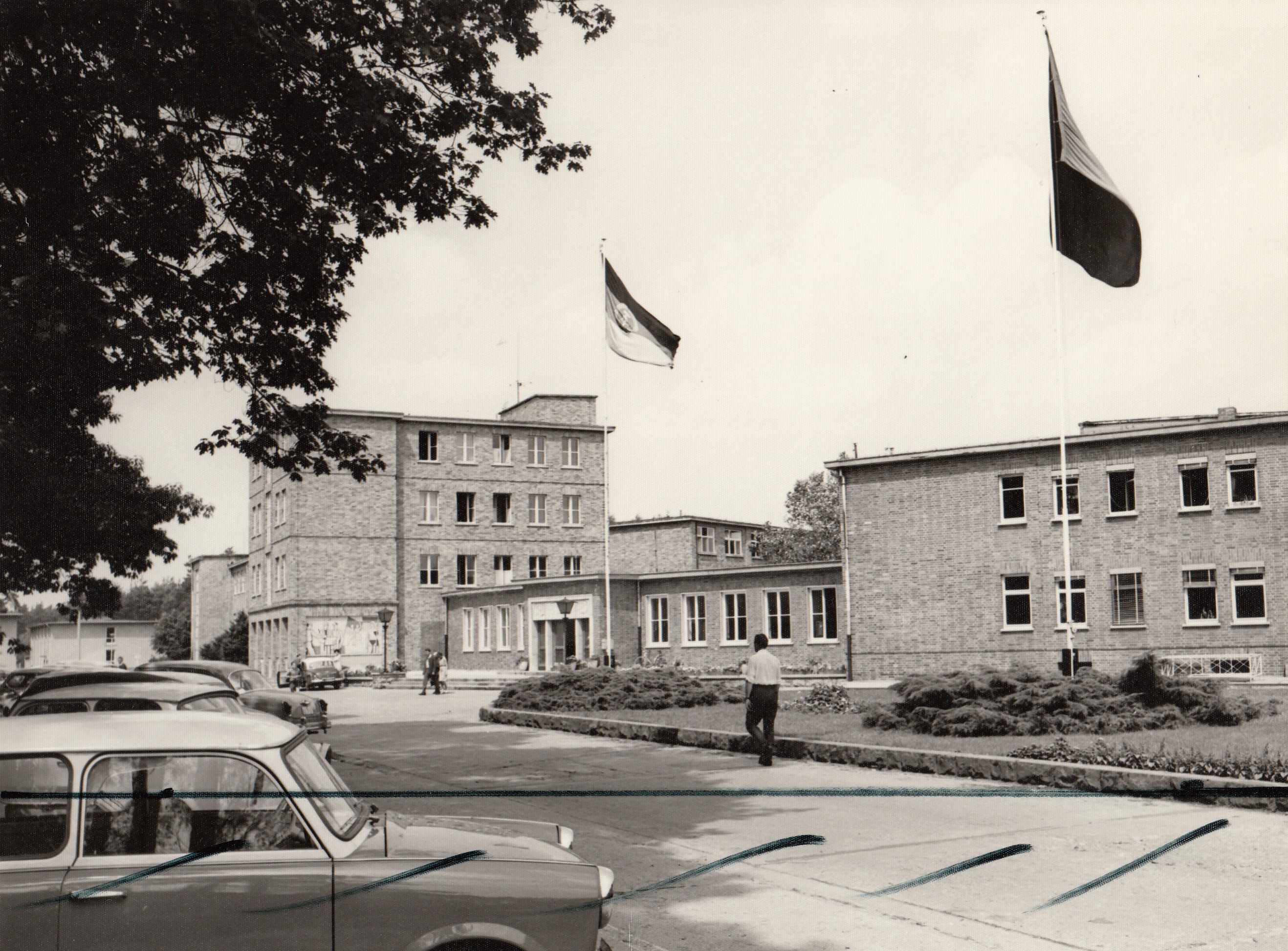
Fig. 14: FGDB-Baukollektiv (architects) / Unknown photographer: Administration building with connecting corridor and covered economic wing of the Meyer-Wittwer building, Georg Waterstradt, 1953–54 / 1980s.
With the restructuring and staff changes at the construction department, the plans for the extension buildings at the Trade Union School also changed. Everything reminiscent of the Meyer-Wittwer building’s modernist architecture disappeared. The glass connecting corridors planned by Waterstradt were left unimplemented. The main building, where the principal entrance was also located, was transformed into an unadorned two-story administrative building faced with red clinker brick; the three chimneys were demolished so that the entrance situation of 1930 was completely alienated—a kind of “face-lifting”33 adapted to a different architectural concept. (Fig. 14) The entire entrance situation on the access road was redesigned in this way, hiding the historic yellow brick building and the modernist face of the Trade Union School. The conservatory, which today has been restored to its initial hypermodern appearance, also fell victim to the planning changes of the building collective and had to make way for a box-like enlargement of the dining hall. (Fig. 15)
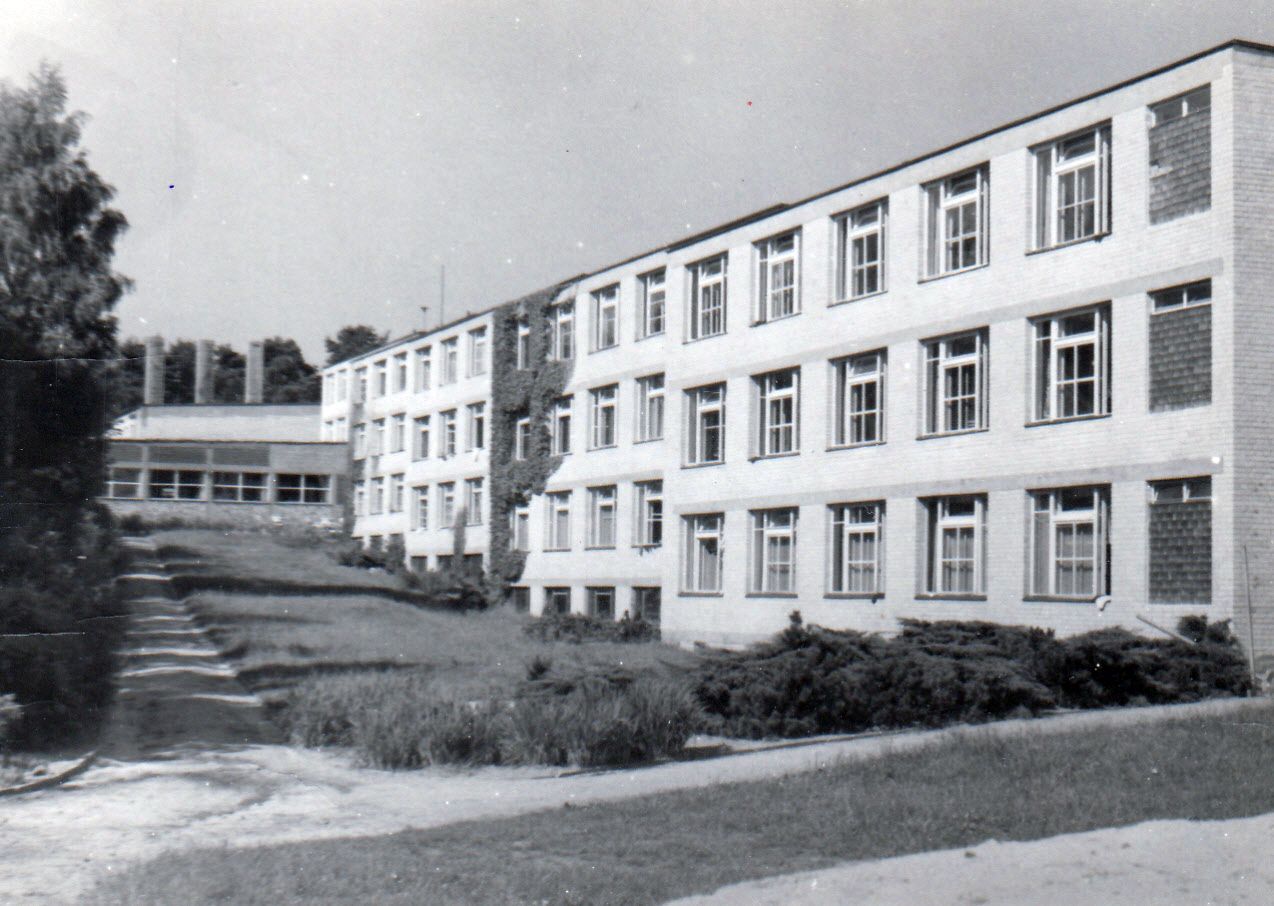
Fig. 15: Hannes Meyer und Hans Wittwer (1928–30) / FDGB-Baukollektiv (Völkel, 1952) (architects) / Unknown photographer: Boarding houses from east side with dining hall extension (chimneys still available, without winter garden), 1952, Archiv baudenkmal bundesschule bernau e.V.
The interior was also greatly changed: The historic auditorium, whose light-reflecting and sound-absorbent walls were covered in a fabric designed by Anni Albers in 1929 (which remained intact until the late 1940s), was completely altered in favor of an enlargement of the kitchen and dining room in the early 1950s; the auditorium’s fabric and wood paneling were probably removed from the walls at this time. The building’s furnishings and interior decor, completely replaced after the Second World War and very similar to those of 1930,34 were now adapted to new tastes, with the building’s modern heritage hidden—for example, by cladding the reinforced concrete binders that had been utilized throughout the Bundesschule.
Georg Waterstradt also recognized that these changes were not only due to the change in function and capacity resulting from the Trade Union School’s planned transformation into a college; the real trigger was the formalism debate in the GDR. In a letter to Heinz Deutschland dated 14 May 1990 he wrote: “Only for a good 12 months I was able to realize these ideas. But in March 1951 a turning point began in the cultural work, which turned out to be extremely harmful. The FDGB federal executive supported these absurd thoughts in 1951.”35 In this light, Waterstradt’s resignation from the construction department on 16 March 1951—just one month after the publication of Kurt Liebknecht’s article where he declared the Trade Union School a symbolic enemy of Bauhaus36—appears differently. An article by Edmund Collein (a former Bauhäusler and then Vice President of the Bauakademie) from 5 December 1951 in Neues Deutschland testifies that Waterstradt was not just imagining this:
“Finally, I would like to say a few words about the two completed buildings, the design of which does not satisfy us in any way. These are the ‘Hochhaus in Erfurt’ and the extension of the ‘FDGB School in Bernau.’ ... Also in the extension of the ‘FDGB-Schule in Bernau’ the wrong way was taken to take up the poor formalistic architecture of the old building created during the Weimar period. The demands for a new German architecture should have been realized in such a socially important building of the FDGB, but instead there was only a new infusion of the cosmopolitan Bauhaus architecture of Hannes Meyer.”37
After the rejection of his plans, which were directly oriented around the existing architecture of the Trade Union School, Waterstradt had no chance to practice architecture in the GDR of the time. And although he continued to call himself an “architect” on stationary letterhead and in publications until his death in 1990, he never worked as an architect again.
After Stalin—Building Faster, Better, Cheaper
After Stalin’s death in 1953, the new head of the Soviet Union, Nikita Khrushchev, changed the official stance on architecture once again. In the report of the Central Committee of the SED at the IV Party Congress, it was finally decided that the “industrialization and mechanization of the building industry ... should be promoted, taking into account a stronger development of prefabricated building elements.” By “complex planning and the projection of whole areas and facilities, as well as cities and towns,” construction costs could be reduced, the speed of construction time increased and the buildings’ quality improved.38 Or as Collein aptly summarized the matter in his 1955 article, “Handbuch für Architekten” (manual for architects): “more beautiful, better, faster and cheaper.”39 These new tendencies also became visible at the Trade Union School area. Waterstradt’s expansion plans dating from the beginning of the 1950s soon needed to be adapted to the increased numbers of students and teachers using the complex, the FDGB building authorities began to focus on Typenbauten (type buildings) here as well. Over the next few years, the former ADGB Trade Union School, originally planned for 120 participants was transformed into a complex university campus where several hundred people studied, taught and lived with their families.
- 1 FDGB-Bundesvorstand Abt. Gewerkschaftliche Schulung: “Bericht über den Erweiterungsbau der Bundesschule des FDGB in Bernau” (Report on the Extension of the FDGB Trade Union School in Bernau), 24 October 1950, BArch DY 34/21819.
- 2 “Über die neue Bundesschule des FDGB im Zentrum Berlins” (About the New FDGB Trade Union School in the Center of Berlin), discussion with representatives of the Hauptplanungsamt Berlin (Main Planning Office Berlin) (Selman Selmanagić) and Federal Board of the FDGB, Karl Fugger, 2 June 1949, BArch DY 34/2402507.
- 3 Letter from the SED (Rudolf Thunig) to Herbert Warnke, 15 June 1949, BArch DY 34/23963.
- 4 “Über die neue Bundesschule des FDGB im Zentrum Berlins,” 2 June 1949, See fn. 2.
- 5 Letter from the SED to Warnke, 15 June 1949, see fn. 3.
- 6 Letter from Georg Waterstradt to the Government Chancellery of the GDR Government, Investment Department, 17 April 1950, BArch DY 34/27.
- 7 It is not yet possible to determine exactly when this structural change in the glass corridor took place. There is an undated photograph in the archive of the Support Association of the building Monument, Trade Union School Bernau (Förderverein baudenkmal bundesschule bernau e.V.) where the glass corridor is already covered with wooden wainscoting. The layer of camouflage paint, clearly visible in this photograph, dates from the occupation of the building by the National Socialists and was only removed after 1954.
- 8 At the time the Waterstradt complex was first registered on the architectural monuments list, access to the building files was limited and information on the decision to classify the ensemble designed by Waterstradt was not wholly accessible. Since the monumental area statutes for the Bauhaus monument Bundesschule Bernau came into force in 2014, its external appearance, at least, have now been placed under protection. Cf. Ilona Rohowski of the Brandenburgisches Landesamt für Denkmalpflege und Archäologisches Landesmuseum, Amtsblatt für die Stadt Bernau bei Berlin (Brandenburg State Office for Monument Conservation and Archaeological State Museum and Official Gazette for the City of Bernau near Berlin): “Satzung zum Schutz des Denkmalbereichs ‘Bauhausdenkmal Bundesschule Bernau’ (Statues for the protection of the Trade Union School monument,” 4 September 2014,” No. 19, 2014, pp. 9–14.
- 9 The Typenbauten and prefabricated buildings planned from the 1960s to the 1980s, which played a major role in shaping the face of the campus of the Trade Union College and are (or were) evidence of the last stages of GDR architecture (“type” buildings on Fritz-Heckert-Straße, SL 3600 consist of the boarding school; prefabricated buildings include the canteen, heating house, infirmary, and nursery) are not included in the monumental area statutes of 2014. In order to restore the historic building ensemble, they were partly demolished (including the canteen, nursery and infirmary) by 2014 or completely renovated (boarding houses in prefabricated construction). As in the 1950s, the site was once again significantly changed through the demolition of buildings that were supposedly outdated and apparently useless. See Ibid, pp. 9–14.
- 10 See for example VEB Holzindustrie Hennigsdorf: Living barack type HH/1 (in wood-saving design), 1953; VEB Wohnungs- und Gesellschaftskombinat Frankfurt/Oder: 3–4 boarding school buildings type WBR SL 3600, 1981; VEB Wohnungs und Gesellschaftskombinat Frankfurt/Oder: Combination Nursery/kindergarten 48/108, 1980, Kreisarchiv Barnim.
- 11 Dieter Hoffmann-Axthelm: “Rückblick auf die DDR,” in: ARCH+ Architektur ohne Architekten, No. 103, Berlin 1990, pp. 66–73, here: p. 69.
- 12 “Der Kampf gegen den Formalismus in Kunst und Kultur, für eine fortschrittliche deutsche Kultur. Entschließung des ZK der SED vom 17.3.1951” ("The Fight against Formalism in Art and Culture, for a Progressive German Culture: Resolution of the CC of the SED of 17.3.1951"), in: Dokumente der Sozialistischen Einheitspartei Deutschlands, Vol. III., Berlin (Ost) 1952, p. 436.
- 13 Walter Ulbricht: “Die Großbauten im Fünfjahrplan,” in: Neues Deutschland, 23 July 1950.
- 14 Martin Bober: Von der Idee zum Mythos. Die Rezeption des Bauhauses in beiden Teilen Deutschlands in Zeiten des Neuanfangs (1945 und 1989) (From Idea to Myth: The reception of the Bauhaus in both parts of Germany in times of a new beginning, 1945 and 1989), Dissertation, University of Kassel, GRIN Verlag, Munich 2010, p. 131.
- 15 Hans Scharoun’s planning for the reconstruction of Berlin (1945) is an example of this. Along with Bruno Taut, Hugo Häring and Hannes Meyer, Scharoun was one of the leading proponents of functionalist architecture during the 1920s and 1930s. His reconstruction concept for the devastated German capital was based on the Athens Charter, drawn up during the 4th CIAM Congress in 1933. Scharoun planned Berlin entirely according to this modern ideal—which even during the Second World War he did not disavow—as a residential landscape consisting of large housing estates situated within large expanses of green space. From the outset, this plan met with incomprehension and was finally completely rejected with the introduction of the 16 principles. See Thomas Flierl: “The 4th CIAM Congress in Moscow. Preparation and Failure (1929–1933),” Quaestio Rossica, Vol. 4, No. 3, pp. 19–33, PDF available here.
- 16 Ulbricht, 23 July 1950, See fn. 13.
- 17 Bober 2010, p. 131.
- 18 See: “The Case of Henselmann,” published in Neues Deutschland. This is regarded as a precedent in aesthetic re-education, documenting the path of Berlin architect Hermann Henselmann from modern architect to socialist classicist. In: Bober 2010, pp. 138–40.
- 19 A large number of Bauhäuslers emigrated to the United States and brought the ideas of the Bauhaus directly to various art faculties. They include Walter Gropius (Harvard), Marcel Breuer (Harvard), Josef and Anni Albers (Black Mountain College and later Yale), László Moholy-Nagy (New Bauhaus Chicago), to name but a few.
- 20 Inge Scholl in a letter to Federal President Theodor Heuss, 29 March 1950, cit. in: Bober 2010, p. 25.
- 21 Letter from Max Bill to Siegfrid Giedeon, 27 August 1954, Map: Max Bill 10, Bauhaus-Archiv Berlin.
- 22 See Kurt Liebknecht: “Im Kampf um eine neue deutsche Architektur” (In the Fight for a New German Architecture), in: Neues Deutschland, 13 February 1951.
- 23 Anmerkung der Redaktion (Annotation of the Editor): “Kunst und Maschine” (Art and Machine), in: Neues Deutschland, 14 March 1951.
- 24 Liebknecht 1951.
- 25 Hermann Henselmann: “Der reaktionäre Charakter des Konstruktivismus” (The Reactionary Character of Constructivism), in: Neues Deutschland, 4 December 1951.
- 26 Letter from Hannes Meyer to Heinrich Starck, 21 December 1951, Estate Hannes Meyer, Deutsches Architekturmuseum Archiv.
- 27 See the letter from Hannes Meyer to Karola Bloch, 2 November 1951, Estate Hannes Meyer, Deutsches Architekturmuseum Archiv.
- 28 Letter from Meyer to Starck, 21 December 1951, see fn. 26.
- 29 Central Construction Department to the Government of the GDR / Ministry of Construction (Kirchern, Helbig), 3 November 1951, BArch DY 34/27.
- 30 Curriculum vitae Georg Waterstradt from 12 June 1951, BArch PA W/7.
- 31 The author has yet to identify the first names of these three individuals. Protocol Building Commission, 16 March 1951, BArch DY 34/16/112/1279.
- 32 Further research on the architects from the building collective involved in construction at the Trade Union School and College in the 1950s is currently being carried out by the author for the aforementioned association baudenkmal bundesschule bernau e.V. and is to be published in a complete publication on the extension of the ADGB Trade Union School in late 2019 or early 2020.
- 33 Dr. Ulrich Hartung in his lecture “Die Erweiterungsbauten der 1960er- und 80er-Jahre an der Gewerkschaftshochschule Bernau-Waldfrieden” (The Extension Buildings of the Trade Union College Bernau, Waldfrieden in the 1960s and 80s), 21 March 2019, Kunstraum Innenstadt, Bernau bei Berlin.
- 34 According to documents contained in the FDGB archives within the German Federal Archives, the entire contents of the building had been almost completely removed from the Trade Union School by the National Socialists and looters after the Second World War.
- 35 Letter from Georg Waterstradt to Prof. Heinz Deutschland, 14 May 1990, Private Archive Estate Georg Waterstradt.
- 36 Liebknecht 1951.
- 37 Edmund Collein: “Wo stehen wir in unserer Architektur-Diskussion?” (Where do we Stand in our Architectural Discussion?) in: Neues Deutschland, 4 December 1951.
- 38 Report of the Central Committee of the SED at the IV Party Congress: “Die gegenwärtige Lage und der Kampf um das neue Deutschland” (The Present Situation and the Struggle for the New Germany), in: Neues Deutschland, 1 April 1954.
- 39 Edmund Collein: “Das Handbuch für Architekten” (The Manual for Architects), in: Neues Deutschland, 6 January 1955.






















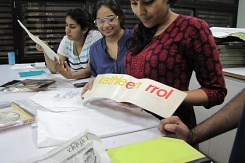










.jpg?w=245&h=163&c=1)

.jpg?w=245&h=163&c=1)








